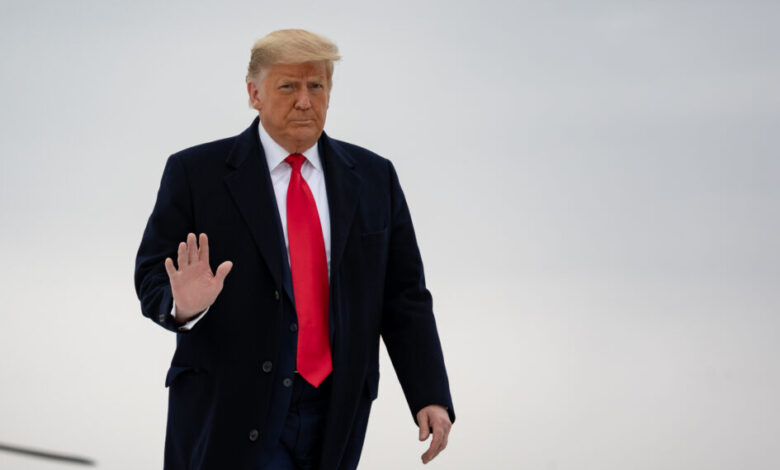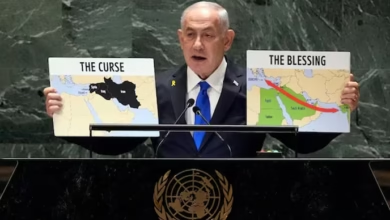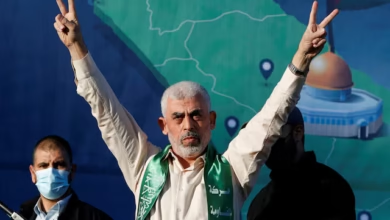Trump: The Only Man Capable of Imposing Peace in the Middle East
With unmatched U.S. leverage, Trump can compel a Gaza ceasefire and a political path—if he squeezes Netanyahu hard enough.

On September 29–30, Donald Trump unveiled a 20-point proposal to end the Gaza war, standing beside Israel’s Benjamin Netanyahu at the White House. The plan promises an immediate ceasefire, a rapid hostage–prisoner exchange, a staged Israeli withdrawal, the disarmament of Hamas, and a technocratic interim administration for Gaza overseen by an international board. Netanyahu publicly backed the outline. Hamas has yet to accept, and early signals suggest resistance to disarmament and governance terms. Still, for the first time in months, there is a framework on the table and a clock ticking. If peace is to be imposed rather than merely imagined, it will require something no other actor currently possesses in this conflict: decisive American leverage, applied personally by Trump.
The plan, in brief—and why it matters now
Trump’s document sketches a pressure architecture: ceasefire first; within 72 hours, the release of all remaining Israeli hostages in exchange for hundreds of Palestinian prisoners; thereafter a phased Israel Defense Forces (IDF) drawdown; the creation of an international stabilization force; and a transitional, non-political Gaza committee that excludes Hamas at the outset. A limited, conditional pathway is opened for a reformed Palestinian Authority (PA) to play a role, but only after significant anti-corruption, governance, and curricular changes. The proposal floats—without firm guarantees—a “credible pathway” to Palestinian self-determination once reforms and reconstruction are underway. For backers, this is a ladder out of the abyss; for critics, it is a ladder leaning against the same wall.
Netanyahu’s shrinking room for maneuver
Nearly two years after the October 7, 2023 attacks, Israel has not achieved a decisive defeat of Hamas. Netanyahu faces a pincer: families of hostages and a war-weary public press for a deal, while far-right coalition partners threaten his government if he concedes too much—especially on eventual Palestinian statehood or a PA role in Gaza. His endorsement of Trump’s plan is thus both strategic and precarious, a bid to recover international standing while managing domestic fire. In political terms, Netanyahu needs Trump; in military terms, he needs an off-ramp.
The Arab calculation: hold your nose, bank a ceasefire
Key Arab states have signaled conditional support despite frustration that Israeli red lines shaped the final text. Their logic is brutally pragmatic: lock in a ceasefire and humanitarian access now; push the governance and statehood questions into the transitional phase; and avoid being trapped indefinitely in Gaza’s security file. This creates glide-path pressure on both Israelis and Palestinians—pressure that only Washington can translate into sequencing and enforcement.
The Hamas variable
Hamas is internally divided over the plan and has telegraphed likely rejection unless core clauses—disarmament and the scope of international oversight—are softened. Even so, Qatari, Egyptian, and Turkish mediators are working the text; Trump has attached a short deadline for a response. In practice, Hamas’s calculus will pivot on whether the proposal credibly ends the war and curbs Israeli freedom of action inside Gaza, and whether prisoner releases and aid ramps are front-loaded. Without movement on these points, rejection becomes the hard default.
Why Trump—specifically—could force the issue
Power in this file is a triangle: money (aid and reconstruction), guns (security guarantees and arms resupply), and green lights (diplomatic cover). The United States controls or heavily influences all three. Trump, more than any other leader, has both personal rapport with Netanyahu and the political latitude at home to threaten the things that matter most to Israel’s war cabinet—timelines on munitions deliveries, conditions on operational freedom, and linkage to broader diplomatic priorities. He also has the bully pulpit to marshal Arab and European buy-in for an interim security regime, and the instinct—admired by some, feared by others—to set deadlines and enforce them.
That leverage only counts if it’s used. The lesson of the past 23 months is that absent sustained pressure on Jerusalem, Israeli politics drift toward maximalist goals that the IDF cannot deliver at acceptable cost, while Gaza’s humanitarian collapse deepens. A credible ceasefire-first deal requires Trump to do more than draft: he must condition—publicly and privately—America’s security and diplomatic support on concrete steps and dates.
The risks—and the necessary corrections
Critiques of the plan are not trivial. Palestinians were again largely offstage in its drafting; the statehood “pathway” is vague; and the PA reform bar is set high and front-loaded. Hamas’s disarmament demand, without a fully spelled out political horizon, is a nonstarter in Gaza’s political physics. These are fixable if Trump couples pressure on Netanyahu with parallel guarantees to Palestinians: an explicit, time-bound political track; third-party monitoring that constrains spoilers; and automatic humanitarian triggers that cannot be shut off by either side. Without that, the plan risks becoming another paper bridge to nowhere.
The bottom line
If peace is to be imposed, it will not be by speeches but by sequencing and sticks. Netanyahu’s military campaign has reached diminishing returns; his coalition constrains him; his public wants hostages home. Hamas is bloodied but not broken and will not disarm for abstractions. Only the U.S. can synchronize the clocks—and only Trump has both the will and the proximity to force the last, hardest mile on Jerusalem. The moment is ugly, imperfect, and overdue. It is also—finally—negotiable. That makes this the narrow window in which Trump could do the one thing his critics insist he will not: compel a peace that endures longer than the press conference that announced it.




